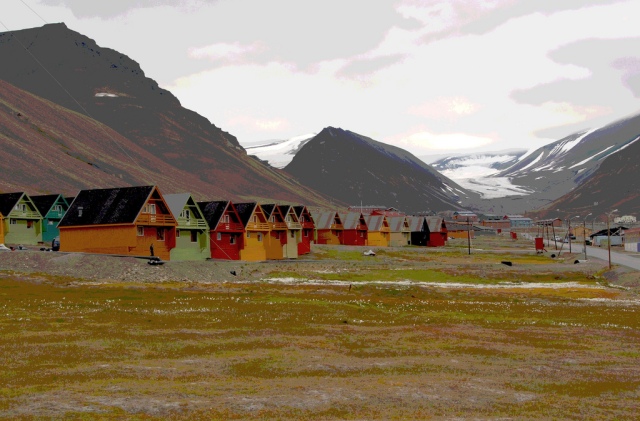5. SPITSBERGEN

Longyearbyen, Spitsbergen (Gus MacLeod/Flickr).
Far from the Caribbean, far above the Arctic Circle, is the Norwegian archipelago of Svalbard, a land of steep peaks, wide snow-covered plateaus, and glacial fjords. Most of the island’s population lives on the island of Spitsbergen, in the town of Lonyearbyen, the world’s northernmost town.
Though Scandinavians may have discovered it in the 12th century, there is no clear documentation the island was discovered until 1596. It served as a whaling base in the 17th and 18th centuries but was later abandoned. In the early 20th century, coal mining began and towns were built. The islands were considered terra nullius, land belonging to no country, until 1920, when a treaty was signed recognizing Norwegian sovereignty over the archipelago. The treaty preserved the right of all signatories to engage in commercial activities there. During the Cold War, two-thirds of the population was Soviet, intended to keep the island from falling into NATO use. To this day, Russia continues operations in Svalbard, though with a much smaller presence but continued animosity. The town of Pyramiden, now abandoned, contains the world’s two northernmost statues of Lenin.
During World War II, the Norwegians and Soviets mostly evacuated Svalbard, and, in 1943, the Germans took the archipelago for use as a meteorological station. The soldiers who manned the station lost radio contact in May 1945 and were not picked up until September of that year, when they surrendered to the captain of a Norwegian seal hunting vessel, becoming the last German troops to surrender.
Spitsbergen is also home to the Svalbard Global Seed Vault, formerly the Nordic Gene Bank. Since 1984, more than 10,000 seed samples of more than 2,000 cultivars for 300 different species have been deposited on the island, initially in an abandoned coal mine and, since 2008, in a purpose-built vault built 390 feet inside a mountain. Spitsbergen was chosen due to its lack of tectonic activity, permafrost aiding in preservation, and the vault’s elevation which should keep the site dry even if the ice caps melt. Researchers believe that some species stored on Spitsbergen could survive thousands of years.
Read more about Spitsbergen at the Independent.


Reblogged this on amazonka12579.
Love your list…but you missed out Bora bora from Tahiti…
great post!
I had heard the Whitsundays are lovely. And Stromboli always seemed like an exciting destination, but I’m a sucker for an island. How about Isola Bella on Maggiore? That’s a fond memory. 🙂